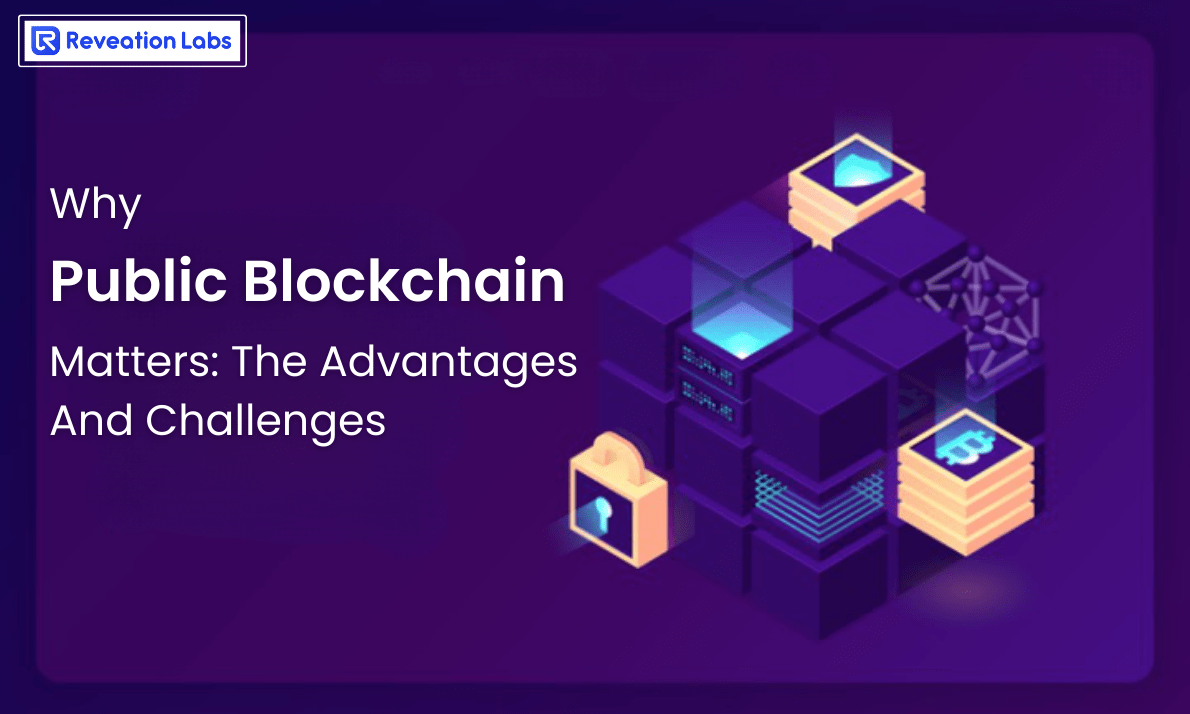Why Public Blockchain Matters: The Advantages and Challenges

Introduction
Public blockchains are game changers in areas ranging from finance to healthcare to supply chain management. Public blockchains, at their core, are decentralized, transparent, and unchangeable ledgers of transactions validated by a network of nodes or participants. This blog will define public blockchains, explain how they work, and discuss some of the advantages and disadvantages of using them.
What is a public blockchain?
A public blockchain is a sort of distributed ledger in which anybody may join and participate. It is decentralized, which means that no centralized authority controls the network. Instead, it is managed by a network of nodes or participants who validate transactions and ensure the blockchain's integrity.
Because public blockchains are transparent, all transactions are visible to everyone on the network. This transparency ensures that all participants see the same information and that no tampering with the data is possible. Furthermore, public blockchains are immutable, which means that once a transaction is added to the blockchain, it cannot be changed or deleted.
Features of Public Blockchain
Certain characteristics define public blockchain architecture. These characteristics distinguish it from other types of blockchain. Let's have a look at what these are -
How Does a Public Blockchain Function?
A public blockchain validates transactions and adds them to the blockchain using a consensus method. The consensus process in most public blockchains is based on a proof-of-work (PoW) or proof-of-stake (PoS) algorithm.
Nodes on the network compete to solve a complex mathematical problem in a PoW system, and the first node to solve the challenge is rewarded with cryptocurrency. Mining is the process through which new coins are created and added to the network.
In a PoS system, network nodes are =--chosen to validate transactions depending on the amount of cryptocurrency they own. The more cryptocurrency a node has, the more likely it is to be chosen to validate.
Once validated, a transaction is added to the blockchain and becomes a permanent part of the ledger. Each block on the blockchain contains a cryptographic hash of the previous block, forming a chain that cannot be changed or destroyed.
Benefits of Public Blockchain
1. Increased Transparency
The users of a public blockchain network have a common shared consensus. If you're wondering why the public network is superior, here's why. The initial response will be openness. Blockchains are considered the next monetizing system because they are transparent, and no one has control over anything.
It was a significant step up from central and federal banks, which had previously controlled the manner of how transactions were conducted. You must also pay additional fees anytime you send money to someone via the traditional manner.
Furthermore, all transaction histories are kept hidden from public scrutiny. Satoshi demonstrated to the world that our traditional system had become obsolete in the digital age.
When a common digital ledger is shared with a large group of people, everyone can keep track of it. This increases transparency and necessitates using a third party to validate transactions.
2. True Decentralised Organisation
The network infrastructure is completely distributed. As a result, each node in the system will have its own copy of the ledger. They can also efficiently update the ledger using consensus algorithms.
This form of blockchain provides a genuinely decentralized structure because no central authority is required at any point.
3. User Independence
Anyone with an internet connection can download a copy of the blockchain and read or rewrite it at their leisure. That is, the general public, not an evil corporation, has the control panel!
4. Innovation
Public blockchains provide a platform for innovation, enabling the development of new applications and services that were previously impossible or impractical.
5. Immutability
The public network is unchangeable. This means that no one can hack the system or take the money. If someone tampers with the blocks, for as, by double spending, all of the other nodes will reject the transaction. As a result, incidents such as tax fraud and various other issues can be mitigated with this technology.
The challenge of Public Blockchains
Scalability is one of the issues of public blockchains. Because nodes on the network validate all transactions, the network's speed and capacity are limited by the number of nodes and the processing power of each node. During times of high network usage, this can result in slow transaction times and high fees.
Furthermore, public blockchains are frequently chastised for their high energy consumption. Mining bitcoins requires substantial computational power, which uses a huge amount of energy. As a result, concerns have been raised concerning the environmental impact of public blockchains.
Public Blockchain Usage
Investigating the best public blockchain examples for your business solution is critical. If you want to employ this blockchain technology, you must understand when you should and should not.
Almost all of the main names in the crypto world, such as Bitcoin, Ethereum, and Litecoin, are built on public blockchains.
At the moment, Ethereum is the most popular public blockchain. In truth, Ethereum elevated the concept of a public blockchain to entirely new heights. At the moment, there are numerous blockchain-based apps.
Conclusion
Public blockchains are a transformative technology with the potential to disrupt industries and existing business practices. They are very secure and resistant to fraud and corruption because they provide transparency, decentralization, and immutability. They do, however, encounter issues such as scalability and energy consumption. Despite these obstacles, public blockchains are expected to gain popularity and adoption as more firms and individuals recognize their benefits.
Originally published at - Why Public Blockchain Matters: The Advantages and Challenges
Comments
Post a Comment